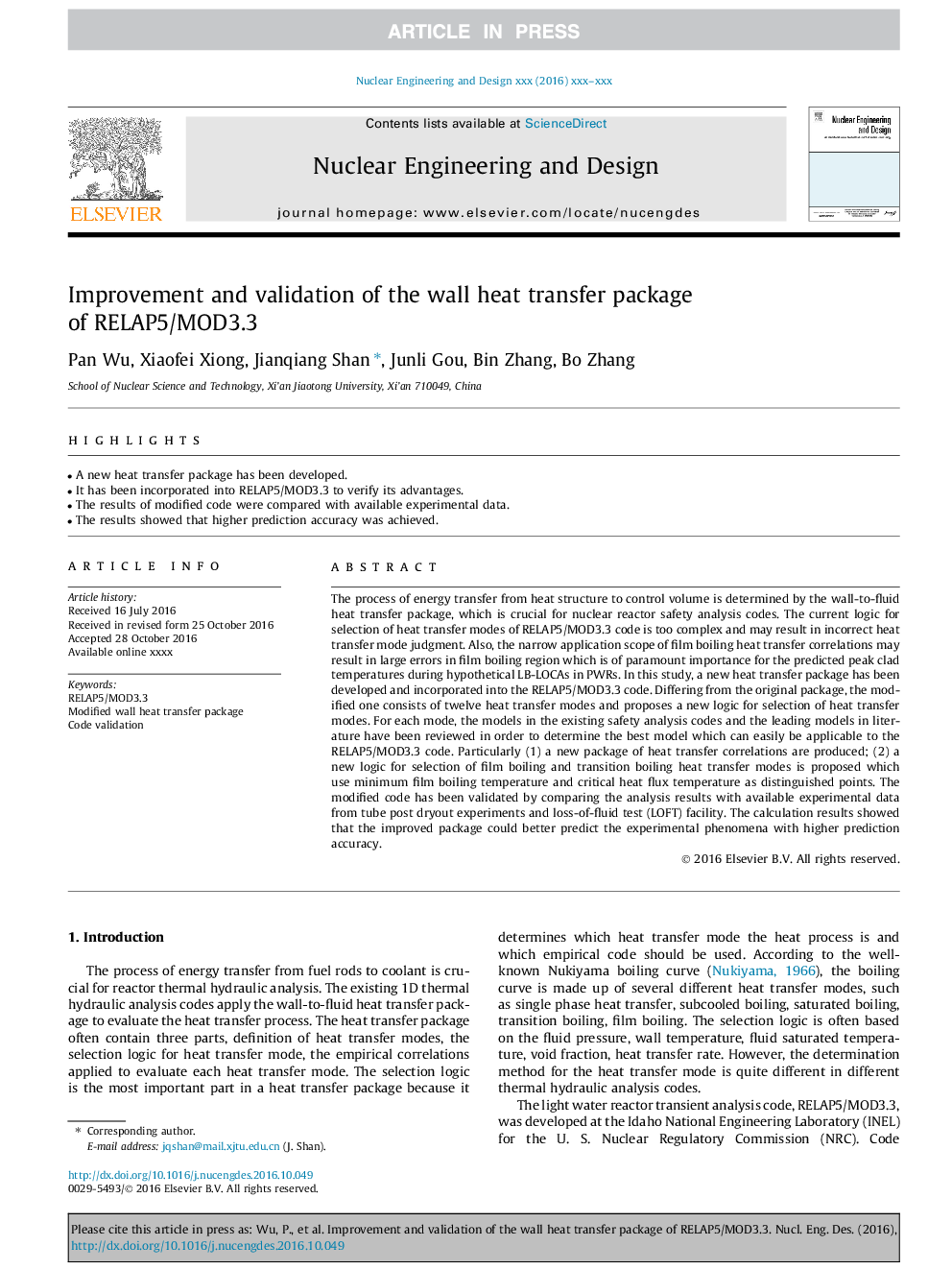| Article ID | Journal | Published Year | Pages | File Type |
|---|---|---|---|---|
| 4925636 | Nuclear Engineering and Design | 2016 | 11 Pages |
Abstract
The process of energy transfer from heat structure to control volume is determined by the wall-to-fluid heat transfer package, which is crucial for nuclear reactor safety analysis codes. The current logic for selection of heat transfer modes of RELAP5/MOD3.3 code is too complex and may result in incorrect heat transfer mode judgment. Also, the narrow application scope of film boiling heat transfer correlations may result in large errors in film boiling region which is of paramount importance for the predicted peak clad temperatures during hypothetical LB-LOCAs in PWRs. In this study, a new heat transfer package has been developed and incorporated into the RELAP5/MOD3.3 code. Differing from the original package, the modified one consists of twelve heat transfer modes and proposes a new logic for selection of heat transfer modes. For each mode, the models in the existing safety analysis codes and the leading models in literature have been reviewed in order to determine the best model which can easily be applicable to the RELAP5/MOD3.3 code. Particularly (1) a new package of heat transfer correlations are produced; (2) a new logic for selection of film boiling and transition boiling heat transfer modes is proposed which use minimum film boiling temperature and critical heat flux temperature as distinguished points. The modified code has been validated by comparing the analysis results with available experimental data from tube post dryout experiments and loss-of-fluid test (LOFT) facility. The calculation results showed that the improved package could better predict the experimental phenomena with higher prediction accuracy.
Keywords
Related Topics
Physical Sciences and Engineering
Energy
Energy Engineering and Power Technology
Authors
Pan Wu, Xiaofei Xiong, Jianqiang Shan, Junli Gou, Bin Zhang, Bo Zhang,
